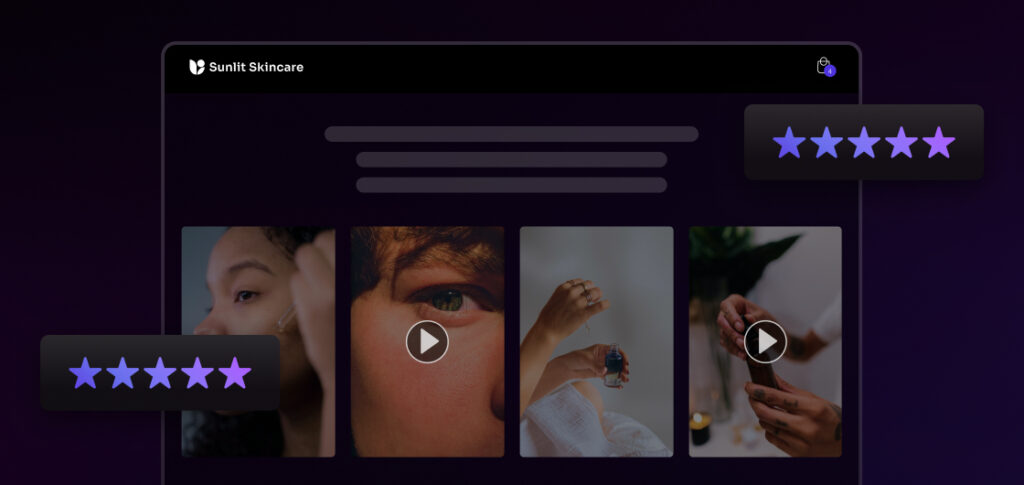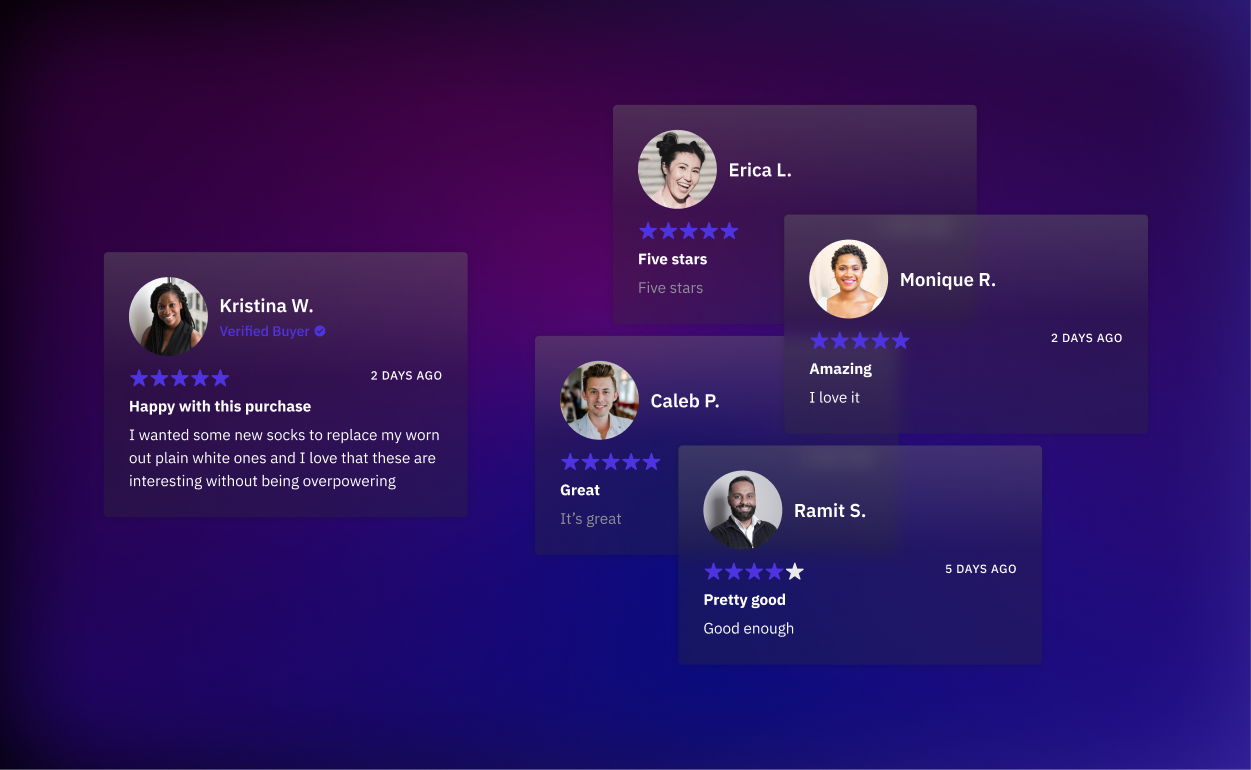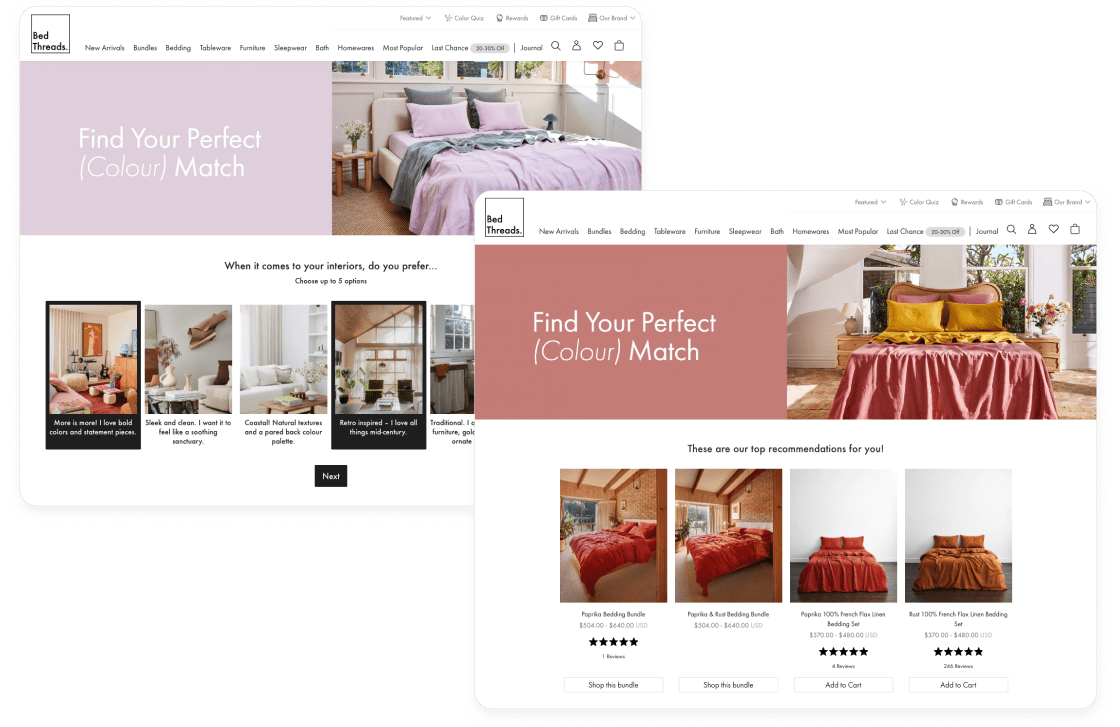
- Customer Marketing
- Reviews and UGC
- Social Proof
How To Add Social Proof on Shopify
Katie Vaught | Apr 25, 2025
Feb 26, 2022 | 7 minute read

Megan Wenzl
Content Marketing Manager
It’s time to make your marketing efforts revolve around your customers.
The cost to acquire a customer in today’s ecommerce landscape is rising quickly. This is because of increased competition, record inflation, and the death of the third-party cookie. And ever-evolving customer expectations only add more challenges. The solution? Focus on acquiring and retaining your customers through customer-centric marketing.
In this article, we’ll explore customer-centric marketing strategies that brands can use to succeed in 2024 and beyond.
Customer-centric marketing is a brand strategy that places the interests, needs, and preferences of customers at the core of all marketing campaigns.
It goes beyond product promotion, seeking to understand and align with the customer’s journey while valuing long-term relationships over short-term sales. This approach recognizes that satisfied customers are the key to retention and loyalty. To achieve this, it involves personalized communication and offerings, exceptional customer service, and consistently exceeding customer expectations.
Customer-centric marketing prioritizes the needs and preferences of customers, resulting in personalized products and campaigns. By focusing on all aspects of the customer journey, brands can create personalized experiences that drive satisfaction and foster loyalty. This, in turn, cultivates long-term customer relationships, leading to high lifetime value and driving sale. Retaining existing customers is more cost-effective than acquiring new ones, making this strategy a good investment.
To implement customer-centric marketing, brands should personalize communications, provide excellent customer service, and consistently exceed expectations. These practices distinguish businesses from their competitors, giving them a competitive advantage. By offering a higher level of customer attention and care, businesses can differentiate themselves and attract more customers.
Customer-centric marketing is a proven and cost-effective strategy that enhances the customer experience and fosters loyalty. By prioritizing customer needs and investing in personalized experiences, businesses can position themselves for long-term success.
To craft impactful marketing campaigns, a deep understanding of your customers is crucial.
Data serves as your key to success here. However, not all data holds the same value. When constructing a customer-centric marketing strategy, the focus should be on collecting and actioning on zero-party data.
Zero-party data encompasses the information that customers willingly share with your brand. By working with zero-party data, you can be confident in its accuracy and reliability as it originates directly from your customers.
Unlike first, second, and third-party data, immediate and actionable insights can be gleaned from this type of data, empowering you to create highly personalized marketing campaigns.
Customers are typically more than willing to provide additional information in exchange for enhanced personalization and targeted offers. Here are some key approaches to deliver a brand experience that truly puts the customer at the center.
If you want to put customers first, reviews are one of the most effective ways to give them a voice in providing feedback about your brand. And showcasing reviews helps prospective shoppers make more informed purchasing decisions, building trust with your brand.
Brands that generate high-quality reviews with customer and product attributes allow customers to actively filter reviews and find those most relevant to them, which helps drive shoppers to purchase with confidence. Okendo customer Born Primitive asks customers to provide information about what activities they perform while wearing the apparel item(s) they purchased.
This increased consumer confidence can have a profound impact on your success metrics. For example, shoppers interacting with Okendo’s review platform are 4-5x more likely to convert, while merchants using Okendo bump up their AOV by an impressive average of 10%.
Generating high-quality reviews from your customers about your product and their experience with your brand is one of the best forms of social proof. According to Okendo’s research on ecommerce trust, 90% of consumers say reviews from real customers are more impactful than those from influencers.
Also, to provide further social proof, ask for user-generated content like photos and videos in your review requests. Why? 87% of consumers say that UGC included in product reviews improves their value in informing their purchase decision, with 42% saying it improves value “significantly.” With Okendo, Born Primitive increased its UGC generation rate by 74%.
Additionally, by giving browsing shoppers access to additional voluntary information, you’re also allowing them to proactively find answers to any questions they might have about products. Not only does this practice create a more streamlined and satisfying customer experience (no need to wait for a reply), you’re also shortening the pathway to purchase and reducing the burden on your support team.

As previously mentioned, zero-party data offers a fantastic opportunity to learn more about the customers you’re courting. Reviews can provide a steady stream of it, so if you’re ready to optimize your collection methods and fully leverage the opportunity for insight, reviews can become a fundamental part of your customer-centric marketing strategy.
When it comes to data collection, the more detailed the review, the better the insight. Enhanced review capture means every review that’s submitted helps you learn more about your customers. Additionally, giving them the chance to relay their full experiences helps them feel appreciated and respected.
Again, Okendo’s Attributes feature gives your customers a chance to provide a comprehensive view of their experiences of your brand. By linking their review to personal demographics and behaviors, they’re able to convey a much more contextually relevant view.
Once you start to build a clearer picture of your audience, you can put the data to use and make your marketing more customer-centric. Use this data to build audience segments and refine your marketing personas, ensuring that your messaging is more relevant and resonates with clearly defined customer profiles.
Surveys serve as a powerful tool in gathering customer data for customer-centric marketing. They offer a direct line to the customer’s thoughts, feelings, and preferences, allowing businesses to pinpoint exactly what their customers need and want.
Well-constructed surveys can reveal insights about the customer’s journey, their satisfaction with products or services, and areas where improvements can be made.
This valuable information can guide the creation of personalized, customer-centric marketing strategies, fostering a deeper connection with the customer. Furthermore, surveys can tap into customer behavior and predict future trends, enabling businesses to stay ahead of the competition. It’s important, however, that surveys are designed with a clear objective in mind, ask targeted questions, and are delivered in a format that encourages customer participation.
For example, sustainable nutrition brand Soylent learned that 30-40% of their customers find out about their product in a retail store. So they now put resources into incentivizing customers who drop off onsite to try the product in-store first.
Quizzes provide a personalized shopping experience that helps customers find the product for them based on their individual preferences. Each quiz answer your brand receives from a customer is a piece of zero-party data that can be used to power more personalized marketing campaigns to drive customer retention and lifetime value.
The luxury bedding brand Bed Threads knows how important it is to create personalized experiences for their customers. With 28 colors of bedding to choose from, the brand set up a 5-question quickly to help customers mitigate decision fatigue. In addition to a 17% conversion rate, the team at Bed Threads collects actionable customer data like customers’ preferred bed color. This data is then used to create highly personalized marketing campaigns.

While customer-centric marketing marketing can seem difficult to implement at first, it’s easy with the right tech stack in place.
Shoppers want a personalized experience, but customers are increasingly concerned about their data privacy. As a result, brands must collect zero-party data transparently and compellingly — having customers consensually share information knowing that it will improve their experience with the brand.
Reviews, Surveys, and Quizzes offer one of the best opportunities to collect this kind of intelligence, and Okendo’s customer marketing platform gives you the chance to get closer than ever to the customers you’re looking to build customer relationships through a more customer-centric approach to your marketing strategies for success now and in the future.
Related articles
Ready to learn more?